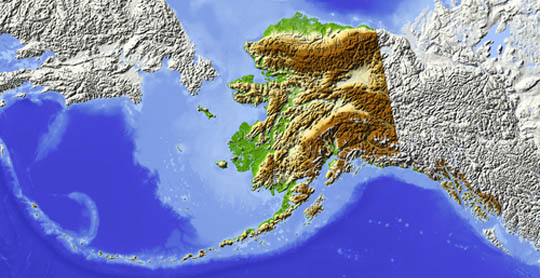



ANWR stands for Arctic National Wildlife Refuge. In 1960, U.S. Secretary of the Interior Fred Seaton set aside 8.9 million acres in Alaska’s northeast corner, calling it the Arctic National Wildlife Range. Seaton did this to protect the region’s “unique wildlife, wilderness and recreational values” (U.S. Fish and Wildlife Service). In 1980, President Carter signed the Alaskan National Interest Lands Conservation Act (ANILCA), which doubled the size of the ANWR and renamed it the Arctic National Wildlife Refuge (ANWR). This act designated most of ANWR as wilderness and, therefore, protected it from crude oil and gas exploration. However, one small area remained a remote possibility for exploration. Called Area 1002 (after section 1002 of the act), the region would be open to exploration only if Congress were to authorize it.
Amidst the controversy over drilling in ANWR, is the push for greater use of renewable sources of energy. Solar energy, wind power, geothermal and biomass have all become less costly and more efficient in the last few years. The price of oil will continue to fluctuate, while the costs for alternative sources of energy will continue to fall. Recent data show that solar power installations are growing at a 50% rate because the cost advantage of fossil fuels is diminishing.
The ANWR is home to some of the most diverse and spectacular wildlife in the arctic. The Refuge’s rich pageant of wildlife includes 36 fish species, 36 land mammals, nine marine mammals, and more than 160 migratory and resident bird species. Some of the species include caribou, polar bears, musk oxen, grizzly bears, wolves, wolverines, snow geese, peregrine falcons, dolly varden, and grayling birds. Although polar bears move throughout the north shore of Alaska, many female polar bears make their dens onshore in Area 1002. Porcupine caribou like to migrate to the area to breed and give birth in the spring. Many bird species also head for nesting areas there during the brief spring and summer.
The Artic Refuge contains remote, complete, and undisturbed lands across five different ecological regions: lagoons, beaches and salt marshes of coastal marine areas; coastal plain tundra; alpine tundra of the Brooks Range; the forest-tundra transition south of the mountains; and tall spruce, birch, and aspen of the boreal forest.
Two groups of native peoples reside within ANWR: the Gwich’in Indians and the Inupiat Eskimos. The Gwich’in Indians live in about 15 villages scattered from Arctic Village, Alaska, southward and westward, extending to Canada. These people live in traditional ways and depend upon the porcupine caribou that migrate and breed within ANWR for subsistence. The Inupiat Eskimos reside along the coastal plain and hunt whales, musk oxen and sheep.
In 1998, the U.S. Geological Survey (USGS) examined ANWR's coastal plain, specifically Area 1002, to estimate the amount of recoverable oil. The USGS projected that there could be anywhere from 5.7 billion to 16 billion barrels of oil (average = 10.4 billion barrels). Of this potential oil, 74 percent lies on federal lands, with the remaining oil on state and native lands. So 7.7 million barrels of oil might be located on the federal portion of ANWR.
Proponents of exploration and production on ANWR’s coastal plain point to the potentially huge resource, which rivals the amount of oil produced to date from North America's largest field, Prudhoe Bay (Alaska). They also contend that drilling can be done without harming the environment or wildlife. Less than 1 percent of the Refuge (12,700 acres on the coastal plain) would be affected by oil drilling and production. Rising oil imports also present a threat to U.S. national security. New oil production in the Refuge would raise the U.S. gross national product by many billions of dollars. It would also significantly increase employment nationwide.
Environmentalists want to protect ANWR from any drilling because of its environmental and ecological value. The Arctic Refuge contains one of the most fragile and ecologically sensitive ecosystems in the world; it represents the only protected area in the world that includes an intact artic, sub arctic, and boreal ecosystem, thus retaining the natural dynamics that have existed for thousands of years. The Arctic environment is extremely vulnerable to long-lasting disturbance because the harsh climate and short growing seasons allow species that have been harmed little time to recover.
The proposed oil and gas development would occur on the 1.5 million acre coastal plain found along the Beaufort Sea. This area is the most sensitive in the entire refuge and habitat loss that occurs here would impact the entire Arctic Refuge. The coastal plain habitat within the Arctic Refuge is also unique from other regions of the North Slope of Alaska because it is relatively narrow (only 15 - 40 miles across), limiting the alternatives for animals using these areas.
877-331-1235 | © Copyright DASolar.com.